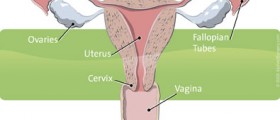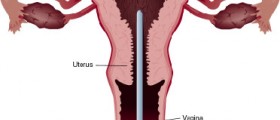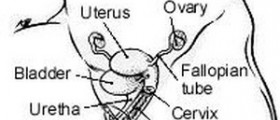
Edometrial hyperplasia is a condition in which the lining of the uterus, called endometrium, becomes excessively thick.The endometrium thickens each month in order to prepare the uterus for pregnancy. It becomes thick so the fertilized egg can embed itself in it. If the pregnancy does not occur, meaning the egg is not fertilized, the thickened lining sheds through menstrual bleeding. This occurs approximately every 28 days.
The process of thickening and shedding of the endometrium is controlled by two hormones - estrogen and progesterone. If these hormones are not in balance, the cells that constitute the endometrium may grow excessively, which leads to thickening of the uterine wall lining, called endometrial hyperplasia.
Endometrial hyperplasia is benign in most cases. It mostly affects women who are affected by hormonal imbalance, such as women reaching menopause. This condition may also be associated with diabetes, obesity and polycystic ovary syndrome.
Symptoms of endometrial hyperplasia
For some women endometrial hyperplasia is almost asymptomatic, or the symptoms are very mild. Many times the symptoms are associated with vaginal bleeding, although there are those that occur outside the menstrual period, such as hot flashes. The symptoms may occur every day or only occasionally.
Common signs and symptoms that may indicate endometrial hyperplasia include acne, bleeding or spotting between periods, menstrual bleeding with heavy flow, excessive body and facial hair, skipped periods, pain during intercourse, tenderness in the vagina and vulva, vaginal dryness and cramps.
Treatment for endometrial hyperplasia
The treatment for this condition depends on the age and the severity of symptoms of endometrial hyperplasia. Younger women can often successfully solve the problem through medication, especially from hormone-releasing contraceptives such as the pill, patches or intrauterine devices.
The usual treatment for endometrial hyperplasia in perimenopausal or menopausal women is hormone replacement therapy. This therapy usually consists of estrogen and progestin or synthetic progesterone. However, hormone replacement therapy is not a good long-term solution because if it is used over extensive periods of time it can increase the risk of stroke, heart disease and cancer.
If endometrial hyperplasia cannot be solved through these treatments, hysterectomy may be the only remaining option. Hysterectomy is a surgical procedure in which the entire uterus is removed.
Some of the potential complications of untreated endometrial hyperplasia include anemia, infertility, abnormal or heavy menstrual flow and cancer.
Women who have been diagnosed with endometrial hyperplasia are strongly advised to have regular check-ups with their gynecologist.

















Your thoughts on this
Loading...